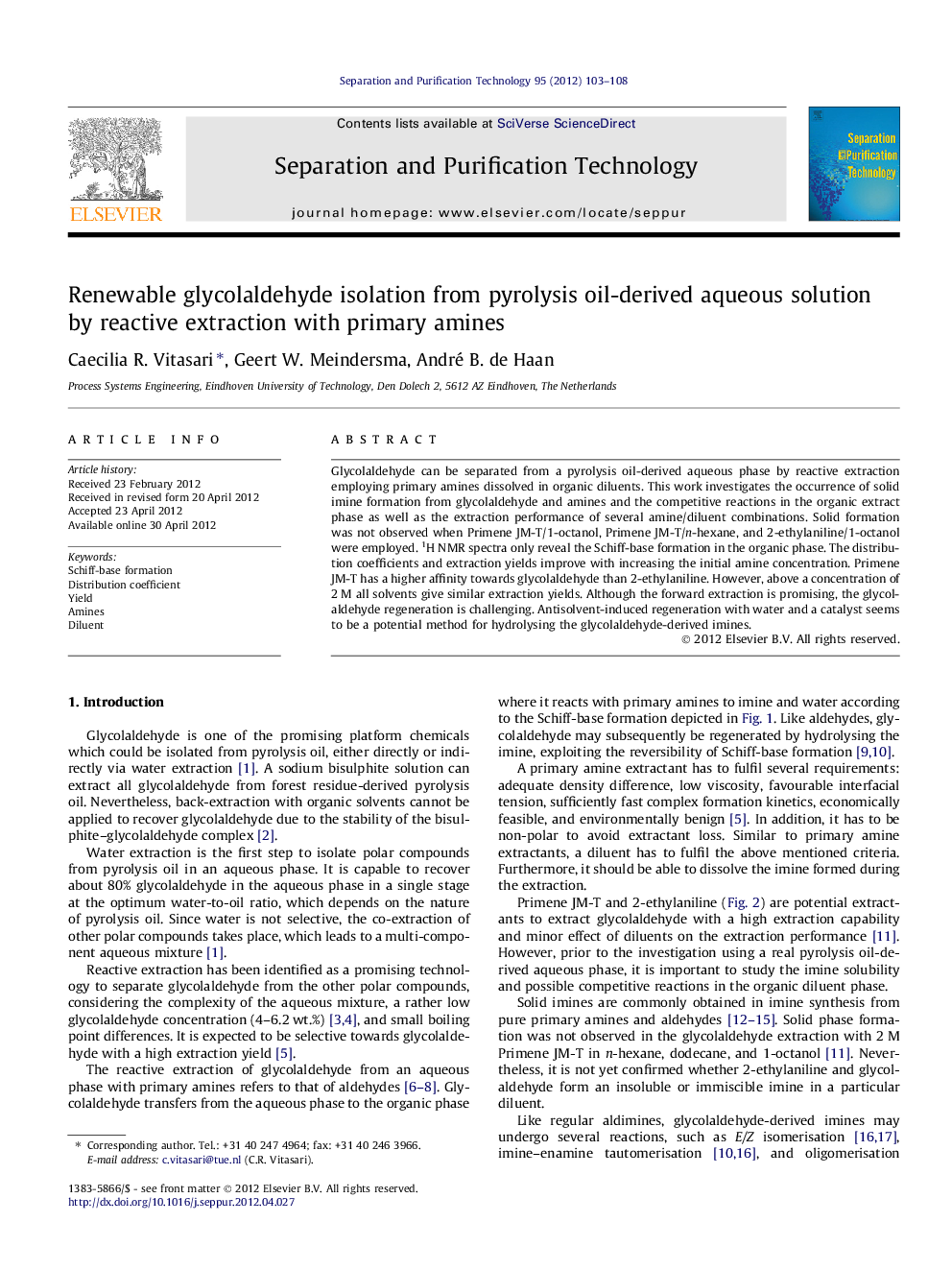| Article ID | Journal | Published Year | Pages | File Type |
|---|---|---|---|---|
| 642184 | Separation and Purification Technology | 2012 | 6 Pages |
Glycolaldehyde can be separated from a pyrolysis oil-derived aqueous phase by reactive extraction employing primary amines dissolved in organic diluents. This work investigates the occurrence of solid imine formation from glycolaldehyde and amines and the competitive reactions in the organic extract phase as well as the extraction performance of several amine/diluent combinations. Solid formation was not observed when Primene JM-T/1-octanol, Primene JM-T/n-hexane, and 2-ethylaniline/1-octanol were employed. 1H NMR spectra only reveal the Schiff-base formation in the organic phase. The distribution coefficients and extraction yields improve with increasing the initial amine concentration. Primene JM-T has a higher affinity towards glycolaldehyde than 2-ethylaniline. However, above a concentration of 2 M all solvents give similar extraction yields. Although the forward extraction is promising, the glycolaldehyde regeneration is challenging. Antisolvent-induced regeneration with water and a catalyst seems to be a potential method for hydrolysing the glycolaldehyde-derived imines.
